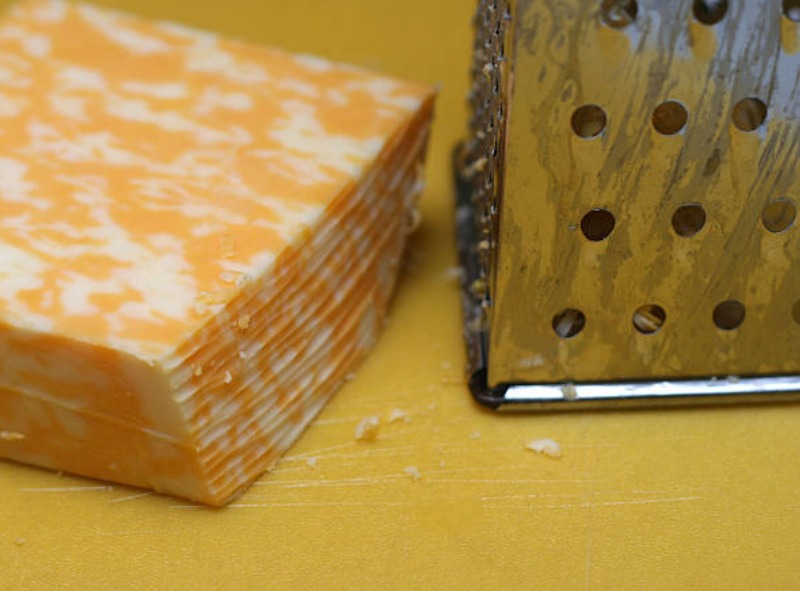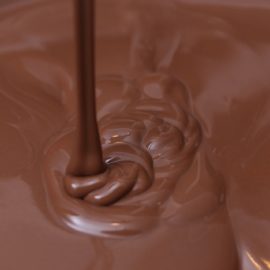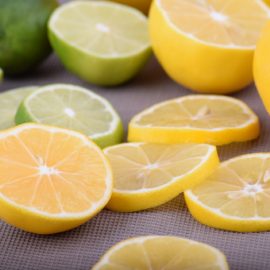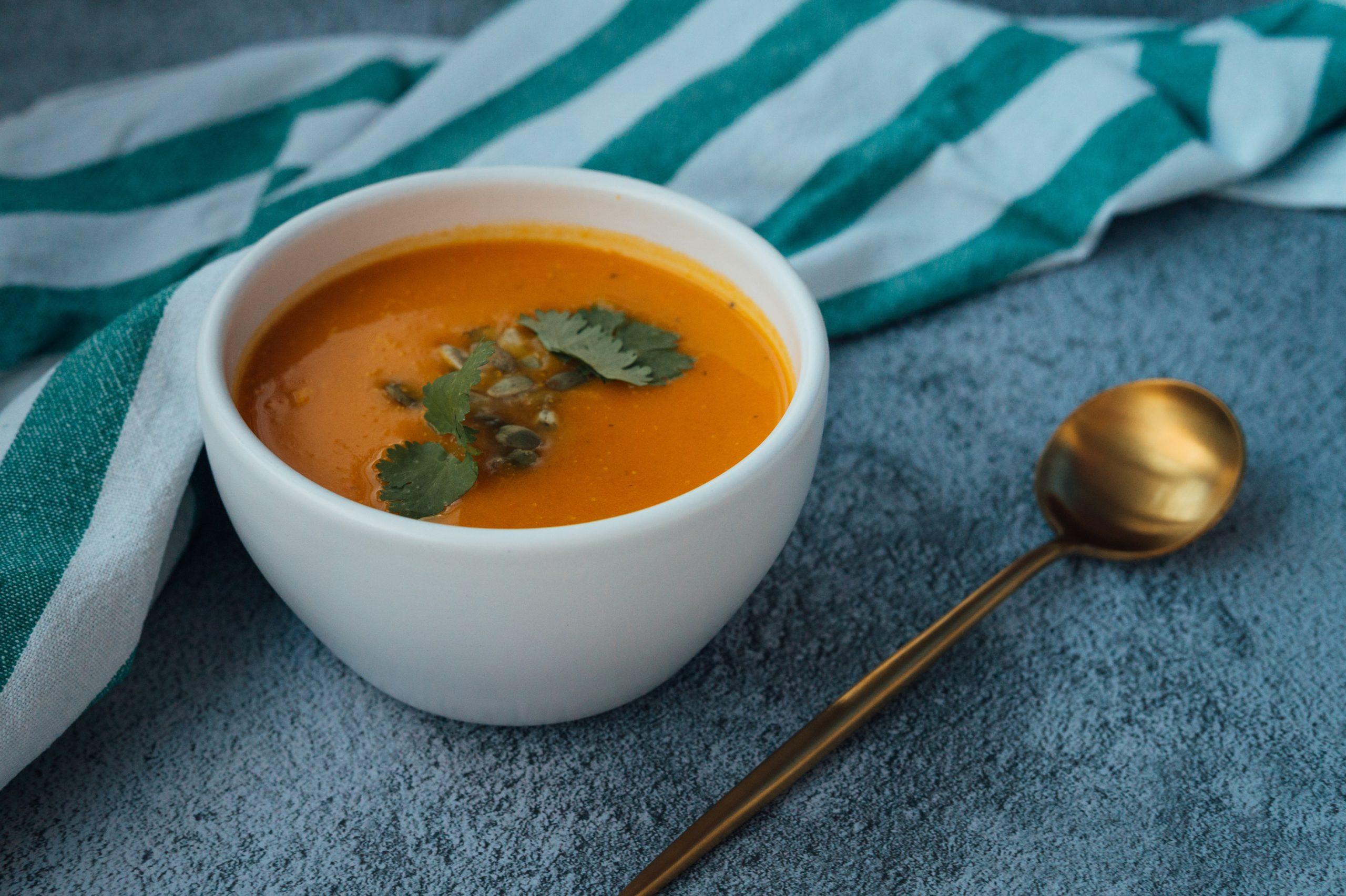
Colby cheese is a type of hard cheese produced from cow’s milk. It originated in 1885 in the town of Colby in Wisconsin, hence the name. Because of its mild taste, Colby cheese is not ideal for cooking. However, it is a great choice for pizza, sandwiches, salads, mac and cheese, burgers, and cheese sauce.
According to the Food and Drug Administration (FDA), Colby cheese is made with or without artificial coloring, contains added common salt, includes no more than 40% moisture, and comprises at least 50% milkfat in its total solids content.
Table of Contents
COLBY CHEESE VS CHEDDAR CHEESE
Colby cheese is very similar to Cheddar cheese because of its yellow color. Both cheeses are also dyed with annatto, an orange-red food coloring agent produced from the seeds of achiota tree. However, there are several distinct features between the two. Colby cheese is more moist, softer, and milder than Cheddar cheese.
The process of making Colby cheese is similar to those of other cheeses, including Cheddar. There is acidification of milk, the addition of rennet, and separation of curds from whey. But there is a modification to the process—washing of curds with cold water. In this step, the whey is replaced with water (washed-curd process). This interrupts the acidification process leading to a cheese that is what Colby cheese is known for—moist, soft, and mild.
You might also like: Why Does Swiss Cheese Have Holes?
There are three types of Colby cheese. First is the regular Colby cheese in rectangular block shape. Second is the traditional Longhorn Colby, which is cylindrical in shape. This is cut into wheels, and then cut into halves to form semi-circle portions. The reason why it is called Longhorn is that the moon-shaped semi-circle looks like the horns of cattle. The last type of Colby cheese is a marbled cheese called “Colby-Jack”, which is a combination of Colby and Monterey Jack cheese. To produce this marbling effect, curds of Colby cheese and Monterey Jack are mixed right before the pressing and ripening stage.
Let’s discuss further.
INGREDIENTS
There are 5 basic ingredients in producing Colby cheese: whole cow’s milk, bacterial culture, calcium chloride, rennet, and annatto (optional).
Whole cow’s milk
Most kinds of milk are good for making cheese—raw milk or pasteurized milk. But not ultrapasteurized milk. Ultrapasteurized milk has undergone a heat treatment of 284°F (140°C). This process eliminates almost all of the microorganisms in milk. However, this denatures too many of the milk proteins. As a result, the calcium does not bond well to produce a good curd necessary for making Colby cheese.
Bacterial culture
Most bacterial starter culture for making cheese are mesophilic, microorganisms that can tolerate moderate heat. The function of bacterial starter culture is to turn the milk acidic and denature the casein and other proteins for curdling.
In the case of Colby cheese, Lactococcus lactis ssp. cremoris and Lactococcus lactisssp. lactis form the most common mesophilic and homofermentative culture.
In many cheese making stores and websites, mesophilic culture starter bacteria can be purchased. Most of them are a mixture of strains of lactic acid producing bacteria. While other culture strains may be used, they may produce other compounds and more acid.
You might also like: Food Science: What Is Processed Cheese?
Calcium chloride
Calcium chloride is not harmful. It is generally recognized as safe (GRAS) as per FDA. It should not exceed 0.2% in cheese as per current good manufacturing practices. The benefit of calcium chloride is that it increases the amount of acidity and adds calcium ions that hold the proteins together. This helps the milk to coagulate better and increase curd yield. If the milk is low in calcium ions, it will have a harder time to facilitate coagulation. Hence, this ingredient is especially helpful when the milk is low in milk solids or overheated.
Rennet
Rennet is a form of an enzyme that acts on casein protein and finishes the curdling process. It comes in two forms: from animal stomach (calf or sheep) or vegetable (thistle). This enzyme breaks down a particular peptide link in the milk protein in a very specific manner. The milk proteins aggregate and form curds as a result of this hydrolysis.
Rennet keeps its function as a proteolytic agent during cheese ripening, in addition to the bacterial starter culture and natural enzymes in the milk. Their combined action produces the texture and flavor profile of Colby cheese.
Annatto
Annatto is an optional ingredient in Colby cheese. It is a food dye derived from Achiota tree seeds. It is used to impart the distinct orange color of Colby cheese. White Colby is made without annatto. Cows that graze in grassy fields produce milk with yellow colored carotenoids. However, the natural annatto dye has been more used as most cows feed on silage, instead of fresh grass.
MAKING COLBY CHEESE
The process of making Colby cheese is similar to that of Cheddar but without “cheddaring” , wherein the curd is cut into cubes to drain the whey before stacking.
It starts by heating the milk at 86°F (30°C) and then adding calcium chloride and annatto dye. The bacterial starter culture is then added. The elevated temperature of 86°F is maintained for 1 hour as the culture becomes active and ferment. Rennet is added to the mixture and then stirred. The mixture is allowed to sit for 45 minutes while moderately lowering the heat. After 15 minutes, there should be a slight firming of the mixture, which can be tested by lightly pressing with a sterile spoon. The cheese is then allowed to sit for 30 or more minutes or until a clean break is observed.
A clean break happens when the milk has curdled and the solid milk breaks cleanly after scooping it with a finger or tool upward. The color to look for is clear and yellow. It is not yet ready if it is milky white or cloudy.
Using a sterile spatula, the curd is cut into 1 inch cubes. This way, the whey separates in the space. Next, the cheese is slowly heated at 103°F (39°C) for 30 minutes or until curds have harden. The curds are ready once they are mostly solid and firm throughout. If the curds have moderate resistance, when pressed using fingers, this means most of the moisture has already been removed. The curds are then incubated at this temperature for 3 hours.
Washed-curd process
After incubation, washing the curds removes the lactose in the whey. The temperature of the curds is lowered to 70°F (21°C) by slowly adding cool water while stirring gently for 15 minutes. This will also slow down the rate of bacterial fermentation. Raising this temperature may produce less moist Colby cheese.
After that, the curds are transferred to a mold using cheese cloth and then drained. Pressing the mold with 20 to 50 lbs (depends on the mass and size of cheese) produces a more cohesive cheese while eliminating moisture. Presses can be a homemade weights or a commercial hydraulic press.
Then, the cheese is bathed in brine of salt and calcium chloride to dehydrate to Colby cheese further. The cheese is waxed to regulate the reaction of oxygen with proteins and fats. This also allows the bacteria to consume the remaining proteins, sugars, and fats as the cheese produces aroma and flavor compounds as it matures. Colby cheese ripening can take anywhere between 5 weeks to 3 months at 37°F (3°C) to 39°F (4°C).


